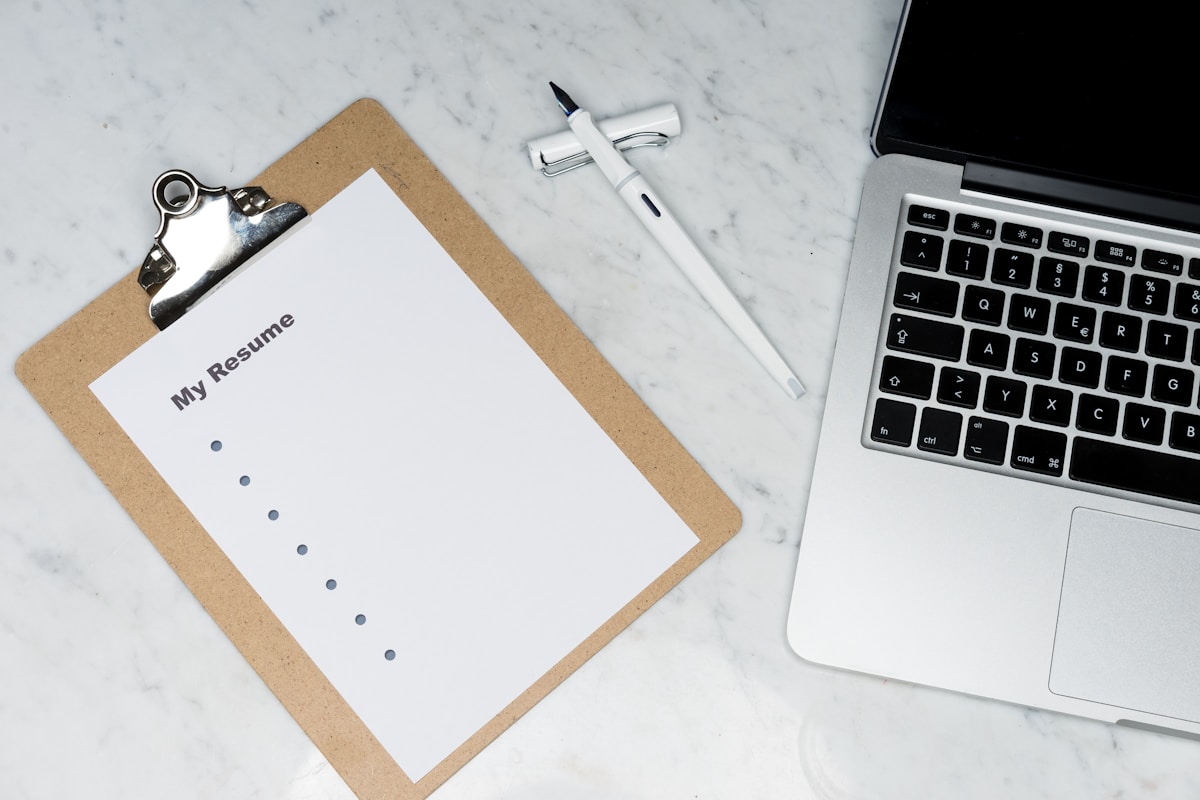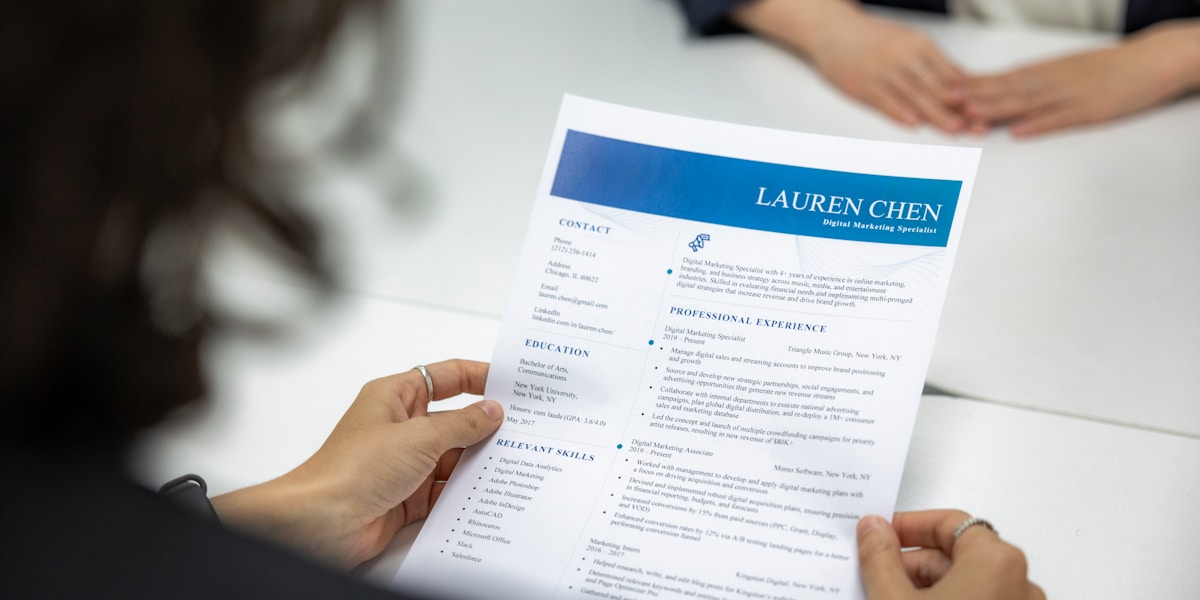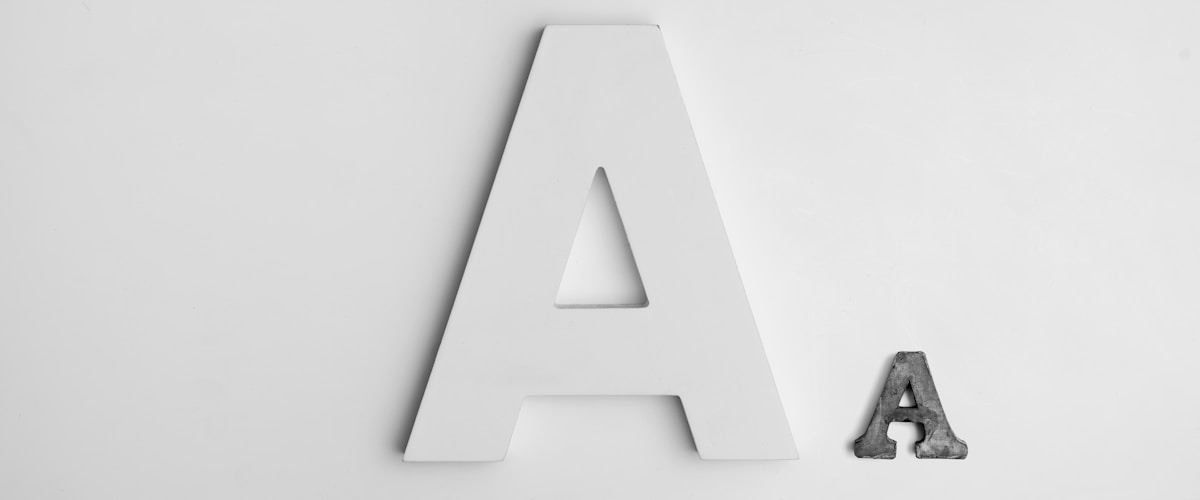Building a Resume: Essential Tips for Standing Out

A compelling resume is more crucial than ever in an extra-competitive job market. So what does a good resume look like? How do you help your resume stand out and grab the attention of hiring manager or recruiter?
You've got a few key resume writing tools in the box - selecting a fitting format, showcasing skills or experiences, using a winning headline, and including great cover letters.
Whether you want to write a resume to target a specific job ad, are switching careers, or are updating an existing resume, this guide will walk you through each step of building a resume, providing time-tested tips and insights to help you craft an impressive resume that opens doors to new opportunities.

Key Takeaways
Choose the correct resume style and right format to effectively present yourself.
Craft an attention-grabbing headline and tailor your work experience to the job description or hiring manager
Highlight job relevant skills, showcase education/certifications, and perfect formatting for a professional appearance.
Choosing the Right Resume Format

Choosing the appropriate resume format is a key step in effectively presenting your skills, experience, and credentials to potential employers. The most common resume formats are:
Chronological – This format focuses on your work history, listing your experiences in reverse chronological order.
Functional – This format emphasizes your skills and abilities, highlighting your qualifications rather than your work history.
Combination – This format combines elements of both chronological and functional formats, showcasing both your work history and skills.
Consider your work history, the role you’re applying for, and your skills to select the format that accentuates your strengths, enhancing your likelihood of success.
Utilizing a resume template can make the process of creating your own resume easier and more efficient.
A resume template provides a pre-designed structure that can be easily populated with your own details, ensuring your resume is both legible and visually appealing. Below are the details of each format to help you make the choice that best aligns with your needs.
Chronological Resume

A chronological resume is a popular format that emphasizes your work experience and professional accomplishments, listed in reverse chronological order.
This format is simple to comprehend and showcases a distinct career progression, making it the preferred choice for most job seekers.
Building a chronological resume involves the following steps:
Provide your contact information.
Write a professional summary that highlights your skills, qualifications, and adaptable abilities.
Detail your work experience starting with your most recent position. Include specific details about your duties, accomplishments, and skills for each job.
Conclude with your educational background, relevant certifications or training, and other sections like volunteer work or professional memberships.
The chronological format is ideal for experienced professionals with a clear career progression, as it allows them to showcase their expertise and achievements in a straightforward manner.
However, depending on how many jobs you've had, this can vary - if you have limited experience or are looking to change careers, you might want to consider a different format, such as the functional resume.
Functional Resume

This format puts the spotlight on your skills and qualifications over your work history, making it a useful choice for entry level candidates or those who are changing careers.
In the functional format, your resume skills section is the most prominent section, allowing you to highlight the abilities that are most relevant to the job you’re applying for.
Building a resume using this format involves the following steps:
Start with your contact information.
Formulate a summary that concentrates on your most directly useful skills and experience.
Create a skills summary section that provides examples of how you’ve utilized each skill in your previous roles, showcasing your expertise and adaptability.
Include a brief employment history section, mentioning only the company names, job titles, and dates of employment, without going into detail about your responsibilities and accomplishments.
While the functional resume format might not suit everyone, it can be an ideal choice for individuals with limited experience or those planning a career change, as it emphasizes the skills and qualifications most relevant to the specific job that you’re applying for.
Combination Resume

The combination resume format combines the best of both other formats, offering a skills overview followed by your employment history.
This format is particularly beneficial for junior and mid-level candidates who possess skills that align with the job requirements, as well as those who have cultivated a robust set of skills and have experience applying them.
For an effective combination resume, follow these steps:
Start with a ‘Skills Summary’ section that presents your significant abilities and qualifications.
Integrate your key skills into your professional history section, listing your experience starting with the most recent
This allows you to highlight both your skills and work experience, demonstrating your well-roundedness and suitability for the role.
The combination resume format is an excellent option for job seekers looking to showcase a diverse skill set and relevant work experience.
By presenting your qualifications and accomplishments in a clear and concise manner, you’ll increase your chances of catching the attention of hiring managers and landing that coveted interview.
Crafting an Attention-Grabbing Headline
An engaging headline is key to creating a powerful first impression on recruiters and distinguishing yourself from other candidates.

A resume headline is a succinct summary of your qualifications as a candidate, located at the top of your resume. Its purpose is to provide a concise overview of your experience, skills, and qualifications, capturing a manager’s attention and encouraging them to read further.
When creating an engaging headline, consider incorporating job-related keywords, underlining your most relevant skills and experience, and keeping the headline concise and clear.
To optimize your headline for applicant tracking systems (ATS) and grab the hiring manager’s eye, be sure to include the job title of the position you’re applying for, as this can increase your chances of being noticed by hiring managers.
Resume Summary vs. Objective

Understanding the differences between a resume summary and objective can help you choose the appropriate option for your resume, based on your experience and career goals.
A resume summary is a brief statement that highlights your skills and background, while a resume objective communicates your motivation for seeking a career in a new field.
If you have limited or no experience or job related skills to the job opening, such as entry-level applicants or career changers, a resume objective statement may be the most suitable option.
An effective resume objective should:
Be succinct
Be tailored to the position
Articulate your professional aspirations
Emphasize pertinent abilities and credentials
Be precise and focused
Omit personal pronouns
On the other hand, if you have relevant work experience and are not transitioning to a different industry or position, a resume summary is the better choice, as it provides a succinct overview of your qualifications and accomplishments.
By choosing the right type of headline for your resume, you can effectively showcase your unique qualities and increase your chances of being considered for the role.
Showcasing Relevant Work Experience

The work experience section, arguably the most critical segment of your job application, offers hiring managers the opportunity to assess your fit for the role based on your professional history.
To maximize the impact of this section, it’s essential to tailor each bullet point to the desired job and demonstrate the skills specified in the job ad with concrete examples.
By customizing your work experience to the job description, you can ensure that your resume accurately reflects your qualifications and expertise.
Formatting Your Work Experience Section

Adhering to the correct structure and format for the work experience section is key to generating a refined, professional resume. Begin by listing your jobs with your current or most recent position at the top.
This format is easy to follow and allows hiring managers to quickly assess your career progression and relevant experience.
Include the following information for each position in your work history section:
Job title
Company name
Dates of employment
Brief description of your responsibilities and accomplishments, using bullet points where possible
Be sure to use action verbs to describe your achievements, such as “spearheaded project X” or “oversaw process Y”. This helps to create a dynamic and engaging work history section that effectively communicates your professional story and accomplishments.
Tailoring Work Experience to the Job Description
Draw lines between your qualifications and the position being advertised.

Tailoring your work experience to align with the job description is crucial in crafting a resume that distinguishes you from other applicants.
One effective strategy for doing this is to read the job description carefully and incorporate the same keywords that appear in it throughout your resume.
This not only ensures that your resume aligns with the specific requirements of the role, but also increases the chances of your resume being noticed by hiring managers and successfully passing through applicant tracking systems.
By tailoring your work experience section to the job at hand, you can effectively showcase your most important skills and accomplishments, demonstrating your ability to excel in the role.
Additionally, by focusing your resume examples on achievements that are directly related to the job description, you can create a more compelling and engaging resume that effectively communicates your value to potential employers.
Highlighting Your Key Skills

Beyond presenting your work experience, it’s important to underscore your skills, including both hard skills and soft skills, in your resume.
Hard skills refer to specific technical knowledge and abilities acquired through education or training, while soft skills encompass personal attributes and interpersonal skills (or very broad skills such as critical thinking)
By emphasizing both types of skills in your resume, you can present a well-rounded profile that demonstrates your ability to excel in the role. Again here, using bullet points to make your information consumable is important.
Resume Preparation: Identifying Key Skills from Job Postings
One effective way to identify the most important skills to include in your resume is to analyze job postings. By carefully reviewing the job descriptions for the roles you’re interested in, you can pinpoint the most relevant keywords and skills that employers are looking for.

This can help you tailor your resume to the specific requirements of the job posting for each position, increasing your chances of being considered for the role.
It’s also important to consider any industry-specific or technical skills that may be required for the job, particularly in fields like medicine, engineering, or marketing.
By showcasing these specialized skills in your resume, along with a mix of transferable soft skills, you can demonstrate your versatility and expertise, making you a more attractive candidate to potential employers.
Presenting Skills Effectively
After determining the skills most relevant to the job, you need to display them effectively on your resume.
One way to do this is by using visual graphics or written measures to indicate your proficiency in each skill, such as a skills bar or visual element. This can help to create a more engaging and visually appealing resume that captures attention.
Another key aspect of presenting your skills effectively is to include a mix of both hard and soft skills in your resume. For example, you might showcase your technical expertise in a specific software program alongside your ability to work well in a team or communicate effectively with clients.
By highlighting a diverse range of skills, you can demonstrate your adaptability and versatility, increasing your chances of landing the job.
Detailing Your Education and Certifications
Whether you have a very impressive academic career or a high school diploma, your education and certifications form another significant component of your resume, as they present your qualifications and specialized expertise in your field.

When listing your education information, it’s important to include the name of the institution, degree earned, and graduation date, all in reverse chronological order.
This format is easy to follow and allows hiring managers to quickly assess your educational background.
Listing Education Information
To properly format your education section, follow these steps:
List the name of the institution.
Include the degree earned and the graduation date.
If you’re a recent graduate, consider including relevant coursework, societies, organizations, and extracurricular activities that demonstrate your aptitude in your field.
For those with incomplete degrees, include the name of the institution, the location, the years of attendance, and any applicable coursework or credits completed.
If you have a high GPA, particularly if you’ve recently graduated and your GPA is 3.5 or above, it’s recommended to include this information in your education section. However, it’s important to avoid rounding up your GPA, as this can be misleading to potential employers.
Including Certifications and Licenses

Along with your education, it’s important to include any relevant certifications and licenses in your resume. These credentials showcase your specialized knowledge and expertise in your field, and can help to set you apart from other candidates.
When listing your certifications and licenses, be sure to include the title of the certification, the name of the host organization, and the date earned. Typically, the certifications and licenses section should be placed directly below the education section on your resume.
If you have only one relevant certification, it’s advisable to include it in the education section of your resume, rather than creating a separate section for it.
By highlighting your certifications and licenses alongside your education, you can create a comprehensive and impressive resume that showcases your qualifications and expertise in your field.
Optional Resume Sections to Enhance Your Application
Adding optional resume sections, like hobbies and interests or volunteer work, offers a broader perspective of your candidacy and aids in distinguishing you from other candidates.
These additional sections can showcase:
Your personality
Your values
Your cultural fit with the company
Your commitment to your community
Your strong work ethic
Hobbies and Interests

Including hobbies and interests in your resume can help to showcase your personality and cultural fit with the company, as well as demonstrate your well-roundedness and values.
When selecting hobbies to include, prioritize those that are related to the position or that illustrate valuable soft skills, such as playing a musical instrument, participating in team sports, or engaging in community service.
Keep the list of hobbies and interests brief and relevant, focusing on those that are most likely to resonate with the hiring manager and demonstrate your suitability for the role.
By including hobbies and interests that align with the job requirements and company culture, you can create a more engaging and memorable resume that stands out from the competition.
Volunteer Work and Extracurricular Activities

Highlighting extracurricular activities on your resume can demonstrate motivation, commitment, and transferable skills, especially if you have limited work experience.
To showcase your volunteer work, include the following information:
Name of the organization
Your role
Dates of your involvement
Any specific accomplishments or responsibilities that are relevant to the job you’re applying for
Including extracurricular activities, such as participation in team sports or involvement in debate team and other campus organizations, can also help to demonstrate your teamwork, leadership, and management capabilities.
By highlighting these additional experiences, you can create a more comprehensive and engaging resume that showcases your unique qualifications and dedication to your professional goals.
Remember that you can also include skills that you demonstrate outside of your professional life in your resume skills section.
Perfecting Your Resume's Formatting and Style
A refined and professional resume is crucial for making a positive first impression on recruiters and enhancing your likelihood of securing an interview.

To make a resume that stands out, carefully select the right design and proofread your content, ensuring that it is visually appealing and free of errors, helping you to stand out from the competition.
Design Considerations
Choosing a resume design requires consideration of your industry and the type of role you’re seeking. For formal industries such as law, finance, or politics, a traditional, simple resume style is recommended, featuring clean lines, no graphics, and darker colors like navy blue or burgundy.
However, if you’re applying for a more creative role in industries like tech or marketing, a modern, visually engaging design may be more appropriate, incorporating brighter colors, sans-serif fonts, and graphic details such as illustrated skill levels or sidebars.

For those applying for an artistic role, such as a graphic designer, a more creative and visually striking resume design may be utilized to catch the hiring manager’s attention and showcase your unique talents.
By considering your industry and the specific requirements of the job, you can choose a resume design that effectively highlights your qualifications and expertise.
Proofreading and Finalizing Your Resume
After you’ve crafted your resume, it’s vital to proofread it several times to ensure it’s error-free and maintains a professional appearance. Here are some steps to follow:
Read your resume aloud.
Highlight any errors with a different font or color.
Use a spellchecker to help identify any mistakes.
Ask a friend, mentor, or career counselor to review it and provide feedback.

By following these steps to write a resume, you can ensure that your resume is polished and free of errors.
To further enhance your resume, consider using a resume builder, software, or AI checkers, such as Grammarly or Hemingway Editor, to help identify any grammar, spelling, or punctuation issues.
These tools can help ensure that your resume is polished and professional, increasing your chances of making a strong first impression on potential employers.
Pairing Your Resume with a Compelling Cover Letter
A well-written cover letter can greatly augment your job application by offering further context and insight into your qualifications and experience.
A compelling cover letter expands on the information in your resume, contextualizing you for the role, demonstrating your passion for the job, your ability to excel in the role, and affording extra leeway to show up (albeit still in writing) as your real, human self.

When composing your cover letter, focus on providing a brief overview of your background, highlighting your most relevant skills and accomplishments, and explaining why you’re interested in the position.
By pairing your resume with a strong cover letter, you can increase your chances of landing an interview and making a lasting impression on potential employers.
Online Showcases
Complementing your resume with an online presence, such as an online portfolio or personal website, is increasingly important, especially for some industries and positions.
This not only enhances your job application but also provides a dynamic platform for showcasing your professional and academic achievements, skills, and experiences to potential employers.

A portfolio website is an excellent way to display your work, projects, or case studies, particularly if you are in a creative or technical field. It allows job seekers to demonstrate their capabilities beyond what a traditional resume or cover letter can convey.
This is especially beneficial for graphic designers, writers, IT professionals, and others whose work can be effectively showcased visually or digitally.
Incorporating links to your professional social media profiles, like LinkedIn, can offer recruiters a more comprehensive view of your professional network, endorsements, and activity in your industry.
Ensure that your social media profiles are up-to-date and reflect a professional image that aligns with your job search objectives.
Summary

Crafting a standout resume requires careful consideration of your job history, skills, and the job you’re applying for.
Remember to pair your resume with a compelling cover letter that expands on your qualifications and demonstrates your passion for the job.
Frequently Asked Questions
What should I do to build my resume?
To build your resume, add your contact details, include a professional summary, list your work experience, education, relevant professional skills used, achievements and awards, use a business format, and include keywords. You can also use an online resume builder
How do you structure a resume?
To structure and write a resume yourself, start by creating a header with your contact information. Then, write a resume summary or objective statement followed by sections outlining your relevant qualifications, skills, work experience, and achievements. Finally, include any additional sections such as extracurricular activities, hobbies, and interests.
What is the difference between a resume summary and a resume objective?
A resume summary is a concise description of your abilities and background, while a resume objective outlines your motivation for pursuing a new career.
How can I tailor my work experience to the job description?
Focus on matching your experience and skills to the requirements in the description by including relevant keywords in your resume. This will give you a better chance of securing the position.